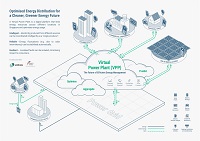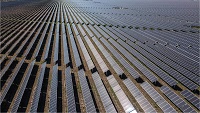For more information, please refer to:
Media Releases
04 Jun 2024
- As electricity demand in Singapore is projected to continue growing, the Energy Market Authority (EMA) has launched a second Request for Proposal (RFP) for new electricity generation capacity. The RFP is part of EMA’s Centralised Process to guide and facilitate the development of new generation capacity to meet demand growth and ensure power system security and reliability.
- The RFP invites the private sector to build, own, and operate two new hydrogen-ready Combined Cycle Gas Turbine (CCGT) generating units to be ready in 2029 and 2030 respectively. Each generating unit is expected to be at least 600 mega-watts (MW) in generation capacity.
- Singapore’s electricity demand has been steadily increasing over the years, driven largely by electricity-intensive sectors such as the advanced manufacturing, digital economy, and transport sectors. Based on EMA’s projections, Singapore’s power system peak demand is expected to grow by at least 3.7% over the next six years, reaching between 10.1 gigawatt (GW) and 11.8 GW by 2030.
- Mr Ngiam Shih Chun, Chief Executive of EMA, said, “As Singapore’s electricity demand continues to grow, it is crucial that we ensure we have sufficient generation capacity to power our homes, workplaces, and communities. We welcome industry participation in our journey to shape a greener and more resilient energy future for Singapore.”
- EMA established the Centralised Process in July 2023 to ensure Singapore has adequate generation capacity to meet future electricity demand and to ensure energy reliability during the energy transition. This framework guides generation companies in developing hydrogen-ready as well as lower-carbon intensity solutions and technologies to contribute to a greener and more resilient power system. Under this process, EMA will forecast electricity demand on a rolling 10-year basis and, if projections indicate insufficient generation capacity, will conduct an RFP to invite the private sector to build own and operate the new generation capacity required.
- Interested parties are invited to submit their proposals by 31 October 2024, 3pm SGT. Details about the RFP can be found at https://go.gov.sg/second-rfp-for-new-generation-capacity.















